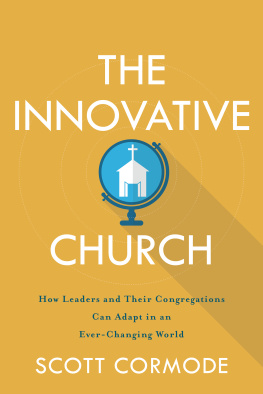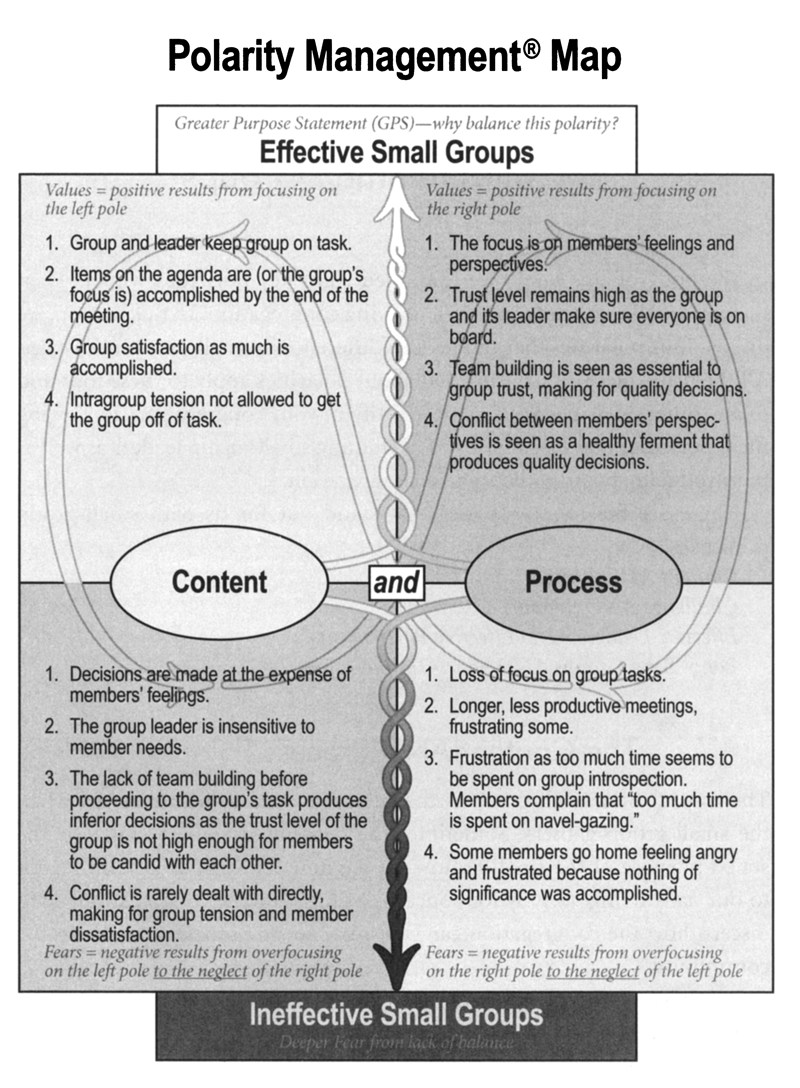ABOUT THE AUTHORS
Roy M. Oswald
Roy M. Oswald is an Evangelical Lutheran Church in America pastor and author of numerous books published by The Alban Institute, including Discerning Your Congregations Future: A Strategic and Spiritual Approach (1996), Clergy Self-Care: Finding a Balance for Effective Ministry (1991), and Personality Type and Religious Leadership (with Otto Kroeger), 1988, as well as the video Why You Should Give Your Pastor a Sabbatical (2001).
Roy M. Oswald
Executive Director, Center for EQ-HR Skills
5930 Moser Road
Boonsboro, MD 21713
(301) 432-2616
roymoswald@aol.com
http://lifestructure.org
Barry Johnson
Barry Johnson is the originator of Polarity Management and author of Polarity Management: Identifying and Managing Unsolvable Problems (HRD Press, 1992 and 1996).
Barry Johnson
Founder and President, Polarity Management Associates
1496 Manitou Lane
Middleville, Michigan 49333
(269) 205-4263
bjohnson@polaritymanagement.com
www.polaritymanagement.com
ACKNOWLEDGMENTS
The first polarity map was created in 1975. (See chapter 1, page 11.) Since then, the map and the polarity principles have become richer through application and experiences in a variety of settings. A number of people have contributed to the evolution of the map. Thank you to John Scherer for creating the rectangle at the top of the map and for coming up with the name for it, Greater Purpose Statement (GPS, a little play on global positioning system); Bob de Wit and Ron Meyer for the Synergy Arrows; Todd Johnson for the measurable Early Warnings; and Sallie Snyder for the idea of converting the original polarity circle into an infinity loop.
When Barry Johnson introduced the concept of Polarity Management to the consultants at the Alban Institute, both Roy Oswald and Speed Leas took an immediate interest. Roy, Speed, and Barry attempted to write a book on polarities within the church, but that book was not to be. We acknowledge Speeds contributions to our work.
Roy acknowledges the contributions to our eight polarities made by participants in Alban Institute training events. Whenever Roy has used polarity principles in a workshop, he has kept the participants work, written on newsprint during the event, and has used their ideas to develop more fully the discussion of the eight polarities.
We acknowledge the long hours editor Beth Gaede has put into this book. She consistently challenged anything that was not clear or that did not make sense. She went far beyond normal editing in the production of this book. We owe Beth our hearty thanks.
We also acknowledge Luke Mossman-Johnson for the graphics that appear in these pages.
APPENDIX A
Polarities in Small Groups
In the body of this book, we examined eight key polarities which, when managed well, can contribute to a thriving congregation. In this section, we discuss four polarities that can make a difference in small-group ministries. All the principles you have learned about polarities apply to these four and to any other polarities you might identify in your congregation. Reviewing these polarities may also assist you in training small-group leaders as well as in introducing polarity theory to a congregation.
There are the four polarities that stand out for us with small-group ministries:
Content AND Process
Challenge AND Support
Effective Leaders AND Effective Participants
Long-Term Groups AND Short-Term Groups
The Content AND Process Polarity
The content of a small group is the subject matter to be addressed when the small group gathers. Sometimes the content or subject matter is the stated purpose of the small groupto see how the Gospel of John relates to our daily living, to pray for concerns brought by the congregation, or to discern how the congregation can best minister to homeless people in the community.
The process of a group is the way group members interact as they go about the groups task. Process issues may be the subject of group reflection. A group might reflect on how members worked together in the meetingfor example, what they liked about the way they accomplished their task, what concerned them about the groups functioning, and how the group could have been more effective. The effectiveness of any group depends on its capacity to give equal attention to process and content.
MapA.1
Map A.1 on page 216 summarizes this polarity.
The Upside of Content
1. In the upside of Content, the group and the leader keep the group on task. For group members to feel a sense of satisfaction at the end of a meeting, both the leader and the group need to attend to this effort. A leaders efforts can be sabotaged by group members. At such times, other group members need to come to the aid of the designated leader.
Upside Left
2. In the upside of Content, the group focuses on its agenda and accomplishes its goals. Groups that work well are able to accomplish at each meeting what they set out to do. Every thriving congregation needs groups that function well. Leadership groups make wise decisions that are owned by the members. A spiritual-growth group states a focus and explores it to the satisfaction of its participants.
3. In the upside of Content, group life is satisfying when much is accomplished. All of us like to belong to groups that complete significant tasks. When a groups decisions have a visible impact on the congregation, its members deserve a pat on the back. In a study or prayer group, tangible results may not be expected, but members should feel that their time was well spent, because they came away with an altered perspective or were enriched by the ideas, feelings, or experiences shared.
4. In the upside of Content, conflict between members perspectives is seen as healthy and necessary to produce wise decisions. Group members expect differences of opinion and do not allow these to derail group progress.
The Upside of Process
1. In the upside of Process, the group focuses on members feelings and makes sure all members are heard. An effective group takes time to listen to its members feelings and perspectives, and allows these to influence the decisions made. Group members will not necessarily agree with a members opinion on a topic or issue, but members leave the meeting knowing that they were heard.
Upside Right
2. In the upside of Process, team building creates group trust, making for shrewd decisions. Research has documented that groups that engage in effective team building develop trust, take more risks, and make better decisions. In a spiritual-growth group, members often want to identify their growing edge and need to face their vulnerabilities and fears. When the trust level in growth groups is high, people are more likely to take such risks and to experience personal transformation.
3. In the upside of Process, the trust level remains high as group and leader make sure everyone is on board. Once group members are engaged with each other, the leader and the group make sure they stay engaged so that they continue to participate in the meeting. Not everyone needs the same amount of airtime: but the group leader or another group member ensures that everyone feels welcome to participate.











